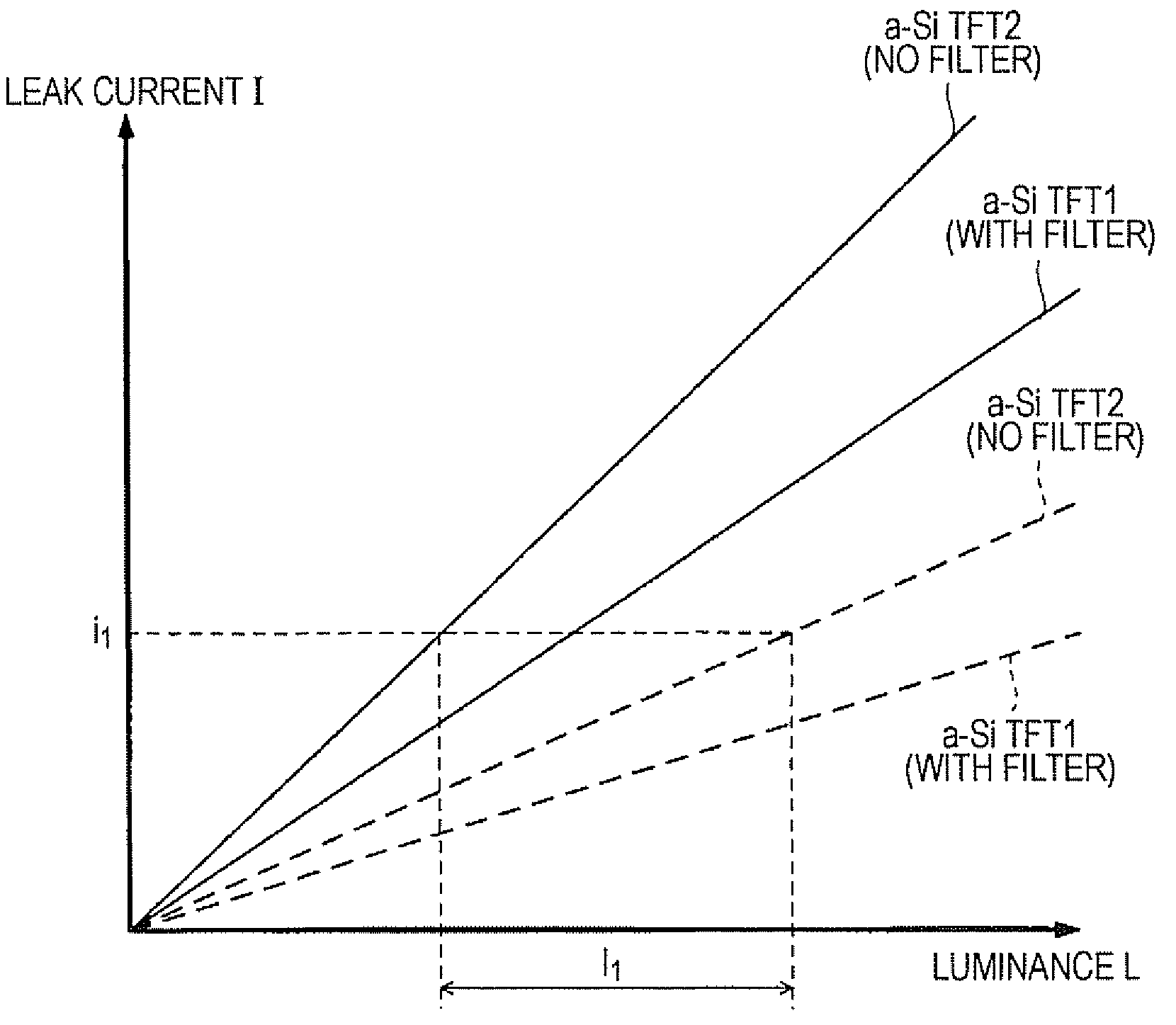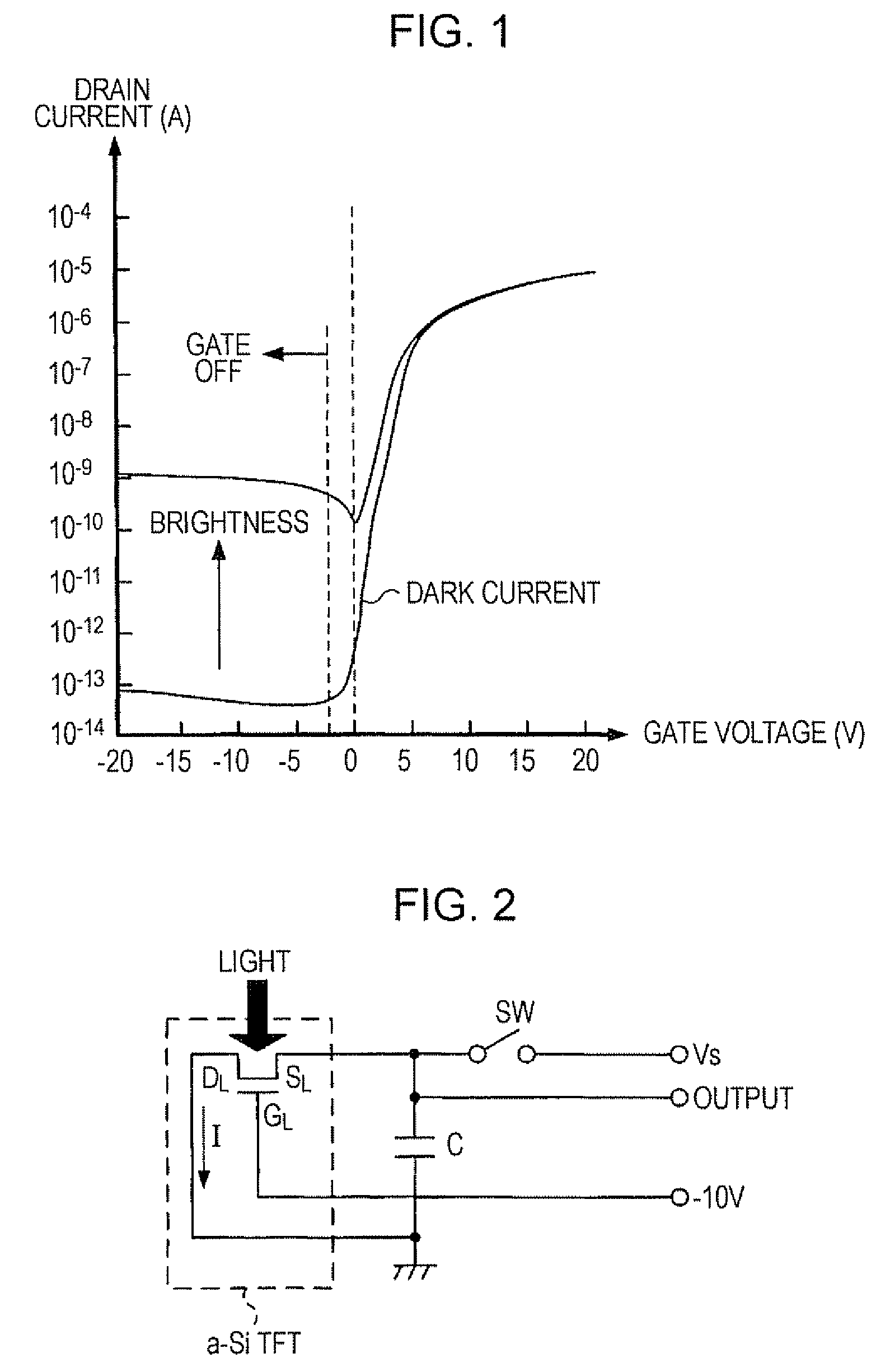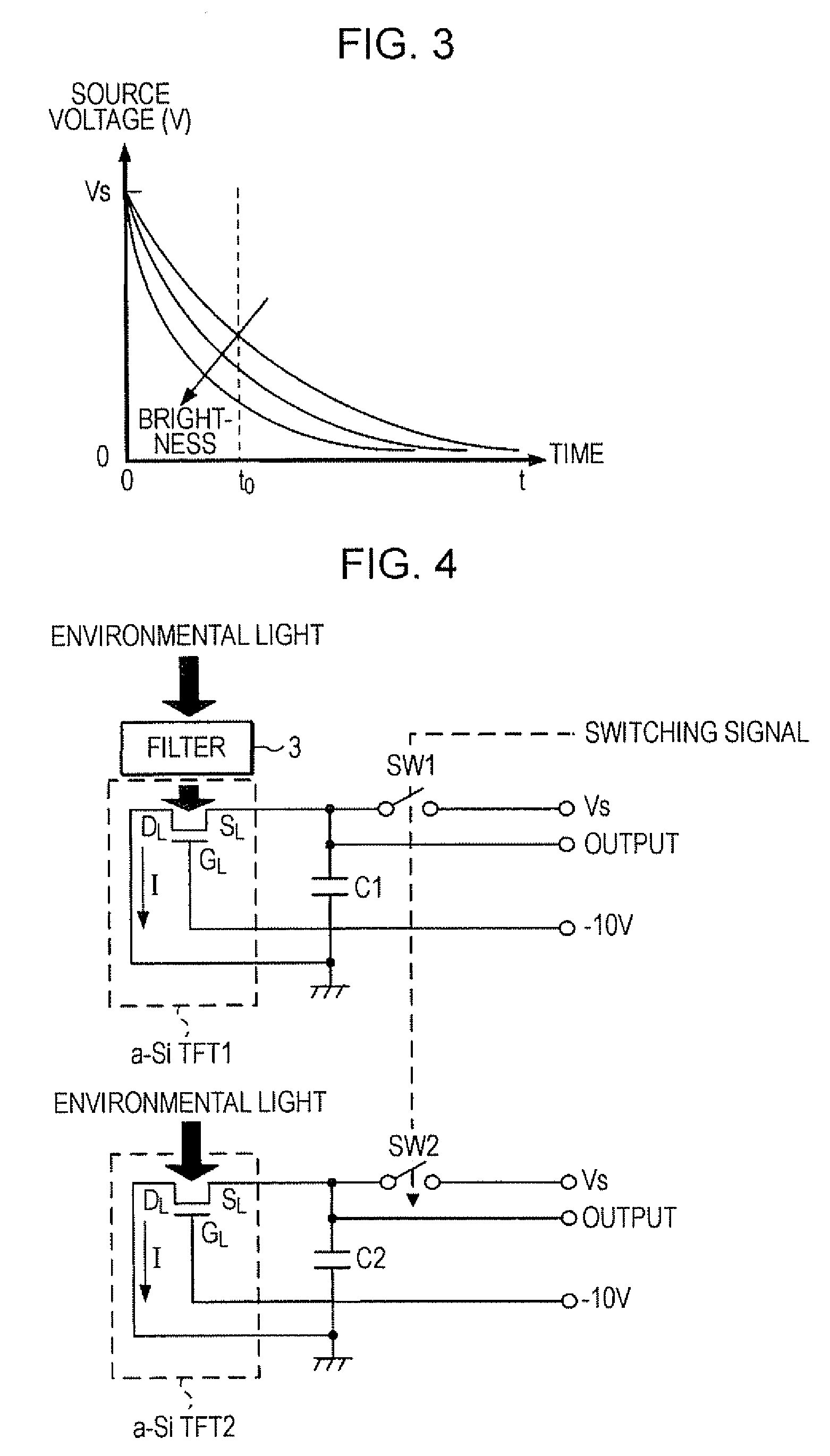Sensing circuit, optical detection circuit, display device, and electronic apparatus
a technology of optical detection and sensing circuit, applied in the direction of optical radiation measurement, identification means, instruments, etc., can solve the problem that the deviation of a detected luminance caused by photodegradation cannot be corrected, and achieve the effect of accurately correcting the deviation of a detection valu
- Summary
- Abstract
- Description
- Claims
- Application Information
AI Technical Summary
Benefits of technology
Problems solved by technology
Method used
Image
Examples
first embodiment
1. First Embodiment
[0045]FIG. 1 is a graph illustrating the relationship between a gate voltage and a drain current of an a-Si TFT (amorphous silicon TFT: amorphous silicon thin film transistor) used as a photoelectric conversion element. Noting a period of time for which a gate is in an OFF state, in the case when light does not be incident on a channel portion, only a leak current (drain current) of 10−13 A or less flows as shown as a dark current in the drawing. In contrast, in the case when light is incident on the channel portion during the same period of time for which the gate is in the OFF state, a leak current corresponding to the intensity (brightness) of the light that is incident on the channel portion flows. That is, in the case of the a-Si TFT, the intensity of a leak current during a period of time for which the gate is in the OFF state is proportional to the intensity of light that is incident on the channel portion.
[0046]It is preferable to use a circuit shown in FI...
second embodiment
2. Second Embodiment
[0074]The case in which the dark filter having a transmittance of 10% is used as the filter 3 has been described in the first embodiment, while a case in which a green color filter is used as the filter 3 will be described in the present embodiment. Moreover, in the present embodiment, the same constituent elements as in the first embodiment are denoted by the same reference numerals, and an explanation thereof will be omitted.
[0075]An optical sensor circuit in the present embodiment includes the circuit shown in FIG. 4, in the same manner as that in the first embodiment. However, the second embodiment is different from the first embodiment in that a green color filter is used as the filter 3 and the incident light amount of the a-Si TFT1 is smaller than that of the a-Si TFT2 due to the green color filter. In the case where a green color filter is used as the filter 3 as described above, the relationship between an integrated luminance and a leak current in an a-...
third embodiment
3. Third Embodiment
[0091]In the present embodiment, a display device that adjusts the brightness of the entire screen according to the luminance (ambient brightness) of environmental light by using the optical sensor circuit 5 and the optical detection circuit 10 described in the first embodiment or the optical sensor circuit 15 and the optical detection circuit 20 described in the second embodiment will be described.
[0092]FIG. 16 is a block diagram illustrating the configuration of a display device 50 according to the present embodiment. The display device 50 is a transmissive liquid crystal display device and includes a liquid crystal panel AA, an optical detection circuit 350, a light control circuit 400, a backlight 500, a control circuit 600, and an image processing circuit 700. In addition, an image display region A, a scanning line driving circuit 100, a data line driving circuit 200, and an optical sensor circuit 300 are provided in the liquid crystal panel AA. In the image ...
PUM
| Property | Measurement | Unit |
|---|---|---|
| reflectance | aaaaa | aaaaa |
| drain current | aaaaa | aaaaa |
| gate voltage | aaaaa | aaaaa |
Abstract
Description
Claims
Application Information
 Login to View More
Login to View More - R&D
- Intellectual Property
- Life Sciences
- Materials
- Tech Scout
- Unparalleled Data Quality
- Higher Quality Content
- 60% Fewer Hallucinations
Browse by: Latest US Patents, China's latest patents, Technical Efficacy Thesaurus, Application Domain, Technology Topic, Popular Technical Reports.
© 2025 PatSnap. All rights reserved.Legal|Privacy policy|Modern Slavery Act Transparency Statement|Sitemap|About US| Contact US: help@patsnap.com



